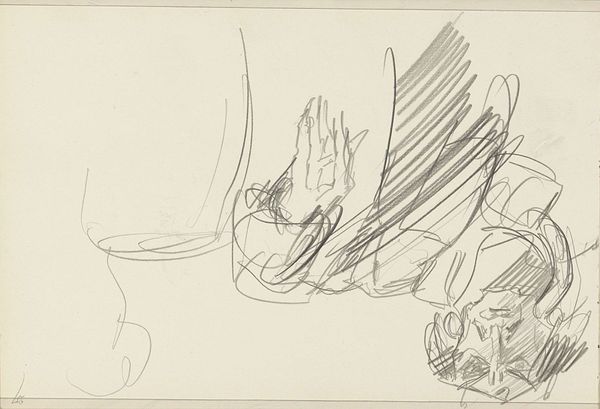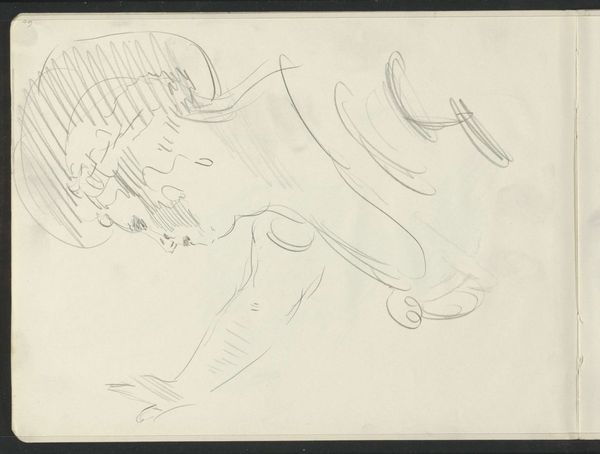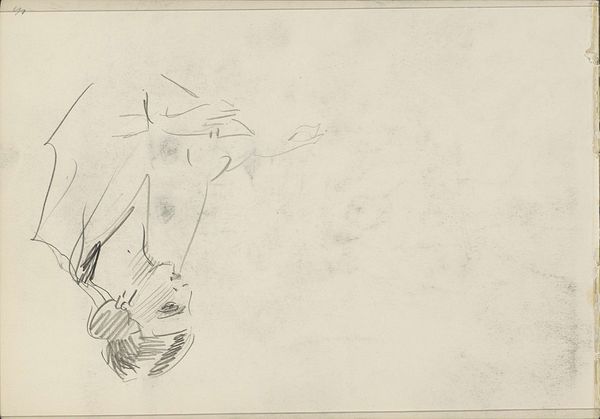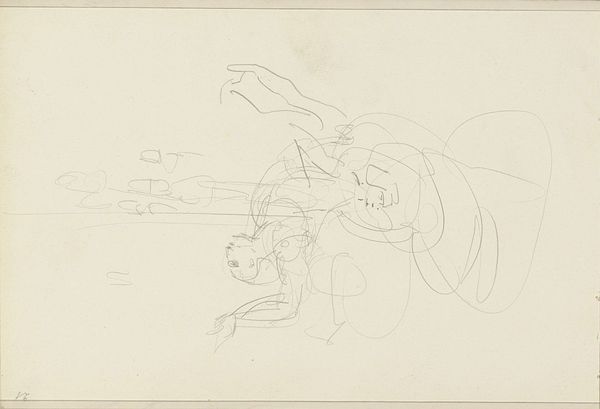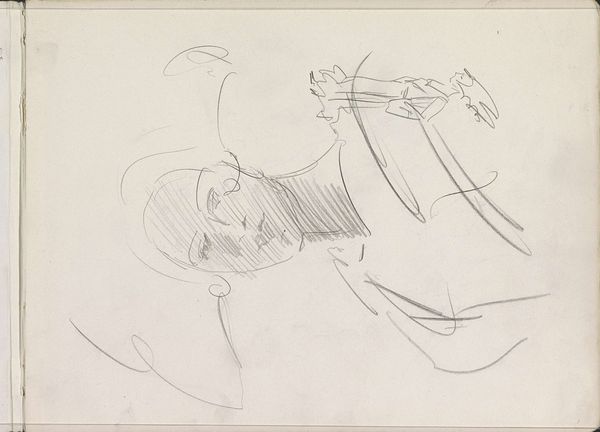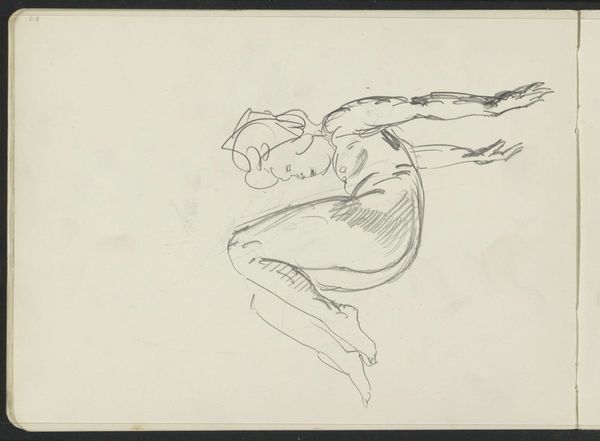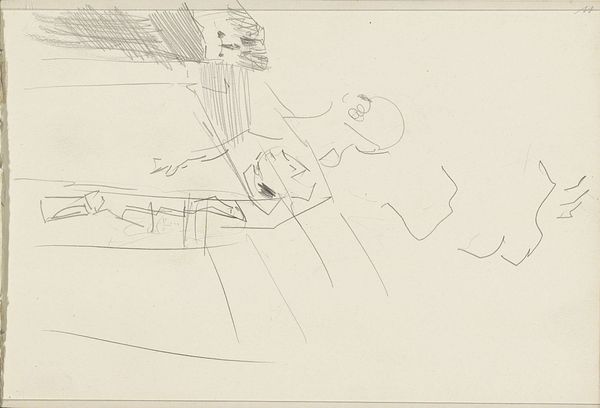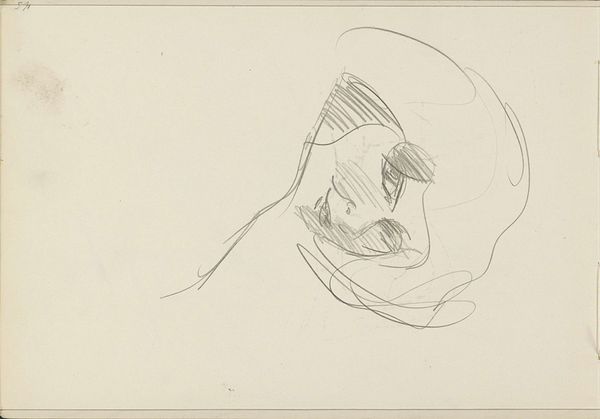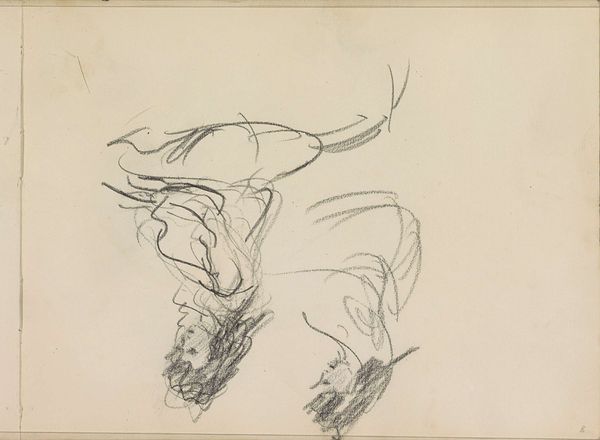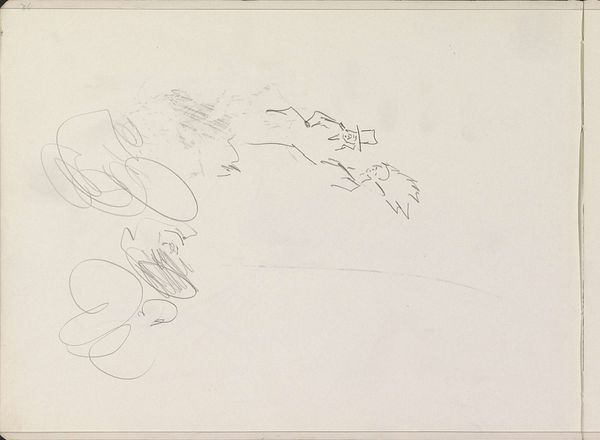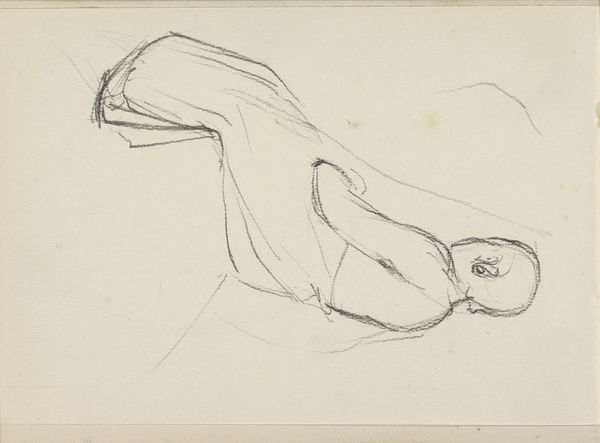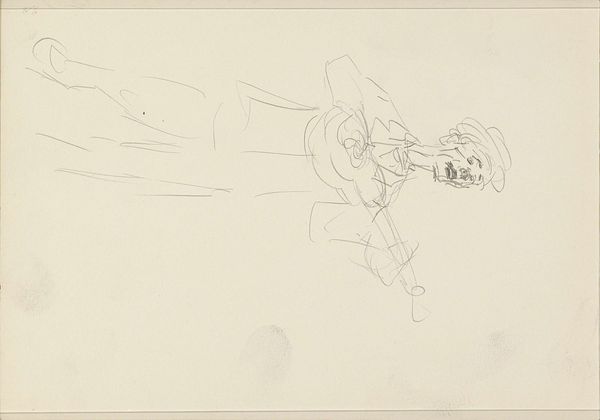
Copyright: Rijks Museum: Open Domain
Curator: Here we have Isaac Israels' "Dancer on Stage, in Profile," likely sketched between 1875 and 1934. It's a delicate pencil drawing, currently held at the Rijksmuseum. Editor: It’s interesting—a fleeting image, caught with such quick, restless lines. There's a raw vulnerability in it. I almost feel like I'm intruding on a private moment. Curator: Israels had a real fascination with capturing contemporary life, often depicting dancers, performers, and everyday city scenes. We need to consider how performance intersects with broader societal issues concerning the female body and spectacle during the period of impressionism, particularly labor. Editor: That makes me wonder about the dancer herself. Is this an image of liberation, capturing the grace and athleticism of the dancer in an empowering way? Or does the vulnerable depiction, rendered in mere pencil strokes, reduce her agency in some way? Was this artist a proponent, observer, or exploiter? I struggle here, given our historical distance. Curator: It’s important to examine the social context within which Israels operated. The depiction of dancers was, and still is, inherently tied to issues of gender, class, and power dynamics, all within the very masculine gaze. Her labor—literal, emotional, physical—is abstracted to art. Editor: There’s a definite immediacy conveyed by the sketch-like quality. One can imagine Israels in the theatre itself, hastily sketching away as the dancers move about the stage. Was it the speed and "on the hoof" nature of its production the ultimate intention of capturing an intimate glimpse into their lives? It certainly shows a more "real" depiction of the performer. Curator: Precisely. He, in effect, aestheticizes lived experience. This prompts vital questions about representation. The loose rendering gives us insight into Israels’ artistic process but perhaps elides the deeper realities faced by working-class performers. But also the way Impressionism was consumed. Editor: Well, on an aesthetic level, the open, unfinished composition lends itself to those more profound dialogues. I am glad to see it being addressed and dissected within these critical frameworks. Curator: Agreed. Bringing contemporary theories into dialogue with art history allows for a more nuanced and ethically engaged viewing experience. I find something compelling about it! Editor: Ultimately, despite any discomfort with the historic masculine gaze, the sketch feels remarkably authentic. Food for thought!
Comments
No comments
Be the first to comment and join the conversation on the ultimate creative platform.
